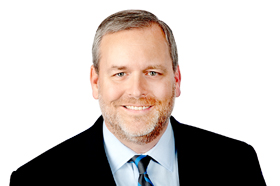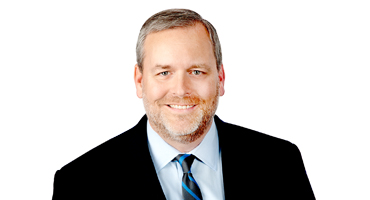Innovation is like adrenaline for today’s healthcare organizations that want to compete without cutting costs. So, how can cash-strapped organizations innovate in ways that yield real returns? How do they innovate, and how do they achieve results?
To answer these questions, Grant Thornton Healthcare Industry Leader David Tyler spoke with three top healthcare executives:
- Robert Bunch, President, BCBS of Georgia
- Sherry Farrugia, Chief Executive Officer, Global Center for Medical Innovation
- Charlie Brown, M.D, Chief Executive Officer, Physician Enterprise Piedmont Healthcare
The discussion was held in Atlanta and hosted online, with attendees from healthcare organizations around the U.S. Tyler began the discussion by asking about the biggest needs for innovation.
What’s the biggest challenge in need of innovation?
Innovation often targets a specific challenge, so we asked the discussion’s online attendees about the biggest challenge they need to solve.
Tyler reflected the question to the panel of guests, opening it up to ask, “What’s the biggest problem that you face today, that you would like to think about from an innovation perspective?”
Download video transcript (PDF - 362KB)
“It’s a known fact that 80% of disease is preventable. We see that,” Bunch said. “Given that,” he said, “the most powerful innovation might not be the discovery of some unknown cure, but rather a way to connect people with the care that they need in a more effective and timely manner.” Bunch said healthcare needs “some way that we truly innovate, in a value-based way, to get from ‘sick care’ to ‘well care’ … If we can do that, that’s innovation. That’s a game-changer for everybody.”
That solution would likely depend on data, and Brown said that data integration might be the innovation in itself. “If we could share quality data and information about patients, to your point, we could get to everybody on a preventative scale that would be unimaginable. We’re just still encumbered by all these pieces of electronic digitalized records.”
Another barrier awaiting innovation is simply the work required between the innovation and the implementation. “A lot of our innovation is held up just simply from bureaucracy,” Farrugia said. She said emerging technology might yield a way to effectively review and approve innovations more quickly. “We’ve looked at AI systems that are out there. Is there a way that we could do some checks and balances that way?”
With the many challenges that healthcare faces, almost every healthcare leader is seeking new options through innovation.
What advice do you have for healthcare leaders seeking innovation?
Tyler asked the panel what advice they would have for leaders that are trying to foster innovation to meet today’s challenges.
Download video transcript (PDF - 396KB)
Farrugia said leaders need to foster the right culture to yield and nurture innovative ideas. “Build a fear-free environment and a diverse team, and then the final thing is to have a balance — not just a diverse portfolio, but a balanced portfolio.” She explained that the portfolio of innovative projects needs to be balanced between short-term gains and long-term gains.
“If we only go after long term, we’re out of business,” Farrugia said. “So, we have to really look at what percent of short-term innovations we are going to focus on mid term, long term, and make those decisions. Sometimes, those are really tough decisions to make.”
Bunch said that innovation is becoming more central to healthcare, and organizations can learn by innovating from the inside out. “Healthcare has to continue to evolve. There’s no doubt that how it looks today is not how it’s going to look ten years from now, or five years from now.”
He added that his organization developed AI digitization capabilities by looking at how the call center was processing data and how they could invest there to innovate. “When that started to add value, then we pushed it out,” he said. “We had to start internally, and we learned that way… Make sure it’s core and be committed.”
“Medicine’s going through the biggest transformation it’s ever gone through, in its care delivery — in a good way,” Brown said. He said systems are bringing physicians, caregivers, nurses, nurse practitioners and others on the care team together around the goal of quality care. This team needs to create and support innovative ideas together. “You’re part of a care delivery team, and you need to accept that.”
As leaders think about fostering cultures that create new innovations, they also need to foster cultures that accept and use innovations — to drive long-term change and returns.
How do you make innovation endure?
Sometimes, even effective innovations can struggle to gain, or maintain, widespread acceptance. For instance, the pandemic gave rise to many innovations which might still be effective post-pandemic, but which might fall out of fashion as people return to old patterns. Tyler asked the panel how to make healthcare innovations endure — or “stick” — over time.
“I think it starts from the top,” Brown said. “It has to be a culture that is central to the mission of the organization.” Brown said that if a culture is centered on the patient experience, “then you can drive that culture: ‘Hey, patients love this, patients need this, and it’s bringing better healthcare to the patient base.’ That sticks in the culture of the organization, but it has to start with the reason — ‘why we’re here.’”
“It’s certainly top-down commitment,” Bunch agreed, adding that results are important. “Innovation’s great, but if you can start to prove that it’s working, simplifying things, making things easier, and improving things, that’s a really big deal.”
Farrugia agreed that lasting success comes from a combination of mission-oriented innovation with visible results. “If you’re here to solve clinical problems, or patient problems, and you do that, then you have impact — and you have to evangelize that impact,” she said. “Because when your team sees that you’re evangelizing what they did, and that impact, there is a sense of pride that comes with that: ‘That was really hard, but it was fun in the end because we made a difference.’”
Contact:



Partner, Technology Modernization
Grant Thornton Advisors LLC
David has 30 years of experience primarily in the health system and health plan areas.
Atlanta, Georgia
Industries
- Healthcare
Service Experience
- Advisory Services
Trending topics

No Results Found. Please search again using different keywords and/or filters.
Share with your network
Share